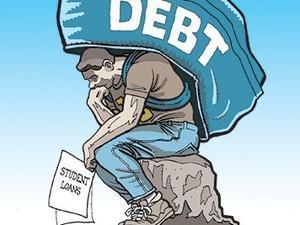All About Student Loan You Should Know(1)

Student loans in the United States are financial assistance that, unlike other forms of financial assistance, such as scholarships and bursaries, must be repaid. Student loans play a very big role in American higher education. About 20 million Americans go to college each year, and about 60 percent of them borrow each year to help cover their spending. In most other developed countries, higher education is a free service and is financed by general taxes. But in the United States, most students or their families pay for higher education themselves. Therefore, graduation is usually a strong predictor of student debt levels for the future. While the differences in returns from investments in different schools are often exaggerated, higher education is still a good investment for both individuals and societies. Student loans come from a variety of sources in the United States, but are largely divided into federal and private student loans, roughly including state-affiliated non-profit and institutional loans provided by schools.
The federal government lends directly to students: Students pay any money for at least half-term enrollment. If the student fails to attend the school halfway, the account enters a six-month grace period. If the mid-term semester has been accepted to drop out, the loan (will) is delayed, but when they drop out again at half-time, they will no longer have a generous period of assistance. The amount of the grant is quite limited. Yes, allowing for postponements and extensions of the program can be obtained for some direct loan schemes. For those with disabilities, there is also a 100% chance of a loan if you meet the requirements( Thanks to the higher education opportunities bill, which was changed in 2008, it became an easier loan after July 1, 2010. (More) there are loan reliefs for teachers and health professionals, those who are serving people in low-income areas. and relief loans are granted to care for people in public work for more than 10 years, which is under the 2007 law (provided for). Currently, several loan deductions are earned by the IRS due to 26 USC 108 (F) regulations.
Federal loans to student parents: The limit is much higher, but loans begin immediately.
Private student loans to students or parents: Higher limits, and benefits that interest will not be repaid until after graduation, although interest starts to accumulate. Private loans can be used for any education-related expenses such as tuition, accommodation, books, computers and overdue balances. Students can apply for private loan subsidies when federal loans, allowances, or other forms of financial assistance are not sufficient to cover all costs.
Federal (government) loans to students
The student loan program was established at the beginning of the Soviet satellite launch. At the time, it was widely believed that the United States had lagged behind in education and technology during the Cold War.







